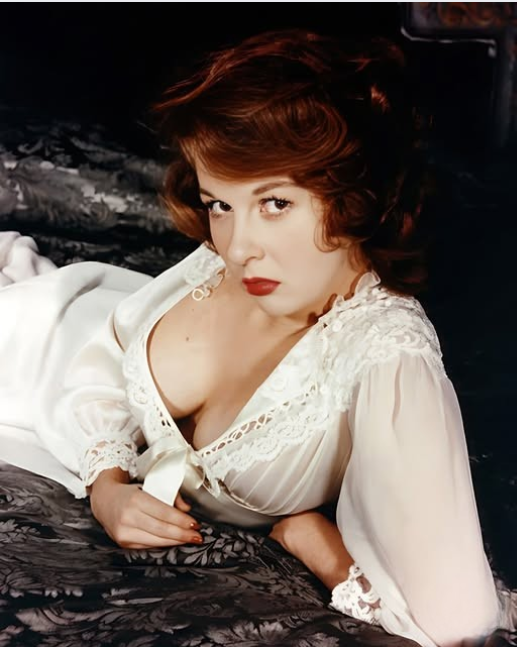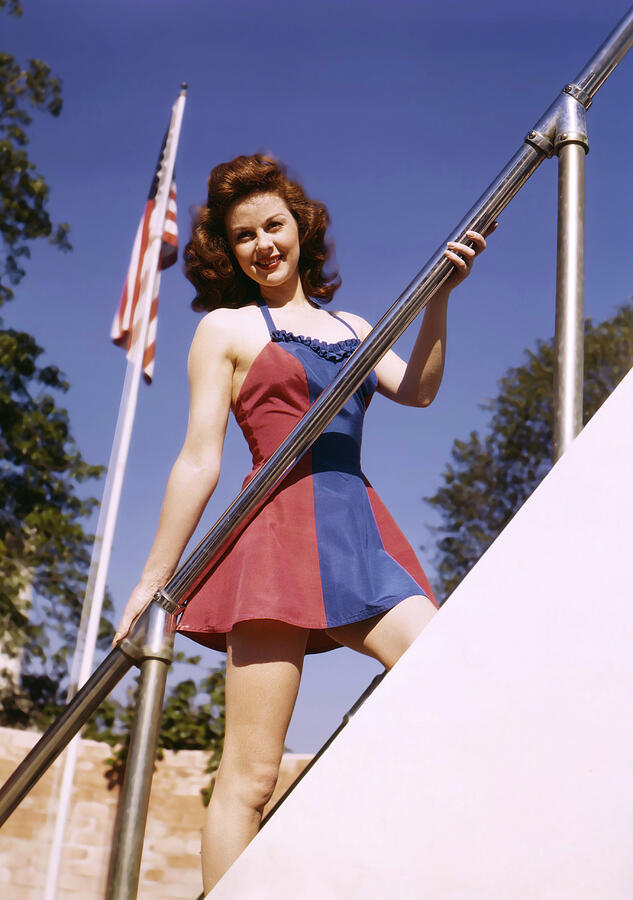During the golden age of Hollywood—a time when cinema flourished with timeless elegance and talent—Susan Hayward emerged as a true standout. Unlike many of her contemporaries, she was not merely a beautiful face gracing the silver screen. Hayward captivated audiences with her emotional range, fierce spirit, and a sincerity that transcended her roles. She became known for playing complex, often tormented women—characters that mirrored the internal strength and resilience she carried in her personal life.
Born as Edythe Marrenner on June 30, 1917, in Brooklyn, New York, Hayward’s early life was marked by financial hardship. Raised in a working-class family during the aftermath of World War I and the onset of the Great Depression, she learned to be independent at a young age. Her dreams were big, even if her world was small.

From Brooklyn to Hollywood
Initially, Hayward set out to become a fashion model. Her striking red hair, strong features, and natural charisma soon caught the attention of industry scouts. In 1937, she traveled to Hollywood to audition for the legendary role of Scarlett O’Hara in Gone with the Wind (1939). Although the role ultimately went to Vivien Leigh, Hayward’s screen test left a lasting impression on casting agents and producers alike. She soon signed with Paramount Pictures, beginning a new chapter in her life that would lead to stardom.
Throughout the 1940s, Hayward worked tirelessly, appearing in a variety of films that showcased her potential. However, it wasn’t until 1947 that she received major critical acclaim for her performance in Smash-Up, the Story of a Woman. Her portrayal of a nightclub singer descending into alcoholism earned her an Academy Award nomination—the first of many. More importantly, it established her as an actress capable of delivering deeply emotional, layered performances.

Climbing to the Top: A Queen of Drama
The 1950s proved to be a golden decade for Hayward. She specialized in playing tragic heroines—women grappling with personal trauma, addiction, loss, or societal pressures. Her roles were not just dramatic but psychologically complex, a rarity for female characters at the time.
She earned further Oscar nominations for My Foolish Heart (1949), With a Song in My Heart (1952), and I’ll Cry Tomorrow (1955). In the latter, she portrayed Lillian Roth, a famous singer who battled severe alcoholism. The role demanded vulnerability, both emotional and physical, and Hayward delivered with gut-wrenching realism. Critics and audiences alike praised her courage to tackle such raw subject matter.
Finally, in 1958, Hayward won the Academy Award for Best Actress for her role in I Want to Live!. The film told the real-life story of Barbara Graham, a woman convicted of murder and sentenced to death. Hayward’s intense, desperate performance humanized a figure who had been largely vilified by the media. The film raised moral questions about capital punishment and showcased Hayward at the peak of her powers.

Off-Screen Battles and Quiet Strength
Hayward’s onscreen strength often reflected her real-life tenacity. She was not a product of the studio system in the traditional sense. Known for her assertiveness and unwillingness to be typecast, she often clashed with producers over creative direction. But those who worked closely with her admired her work ethic and dedication.
Her personal life was no less dramatic. Hayward endured the breakdown of her first marriage and later married Georgia businessman Floyd Eaton Chalkley, who provided her with a measure of stability. Tragically, Chalkley passed away in 1966, an emotional blow from which she never fully recovered.
Despite these hardships, she maintained a grounded perspective on fame. Unlike many Hollywood stars, Hayward shunned the party scene and chose a quieter, more private lifestyle.

A Poignant Final Act
By the late 1960s, Hayward began to withdraw from public life and screen appearances. Her final film role came in The Revengers (1972), after which she focused on her health and family. In the early 1970s, she was diagnosed with brain cancer, believed by some to be linked to radioactive exposure during the filming of The Conqueror (1956) in Utah—an area affected by nuclear testing.
On March 14, 1975, Susan Hayward passed away at the age of 57. Her death marked the end of an era, but the impact she left behind endures to this day.

Legacy of an Icon
Susan Hayward was not just a Hollywood actress—she was a trailblazer. At a time when women were often relegated to decorative or secondary roles, she demanded stories that mattered and characters with soul. Her portrayals of suffering, resilience, and redemption resonated deeply with audiences, especially women who saw a part of themselves in her struggles.
Though she never courted the spotlight for its own sake, her contributions to cinema continue to be honored. In 1960, she received a star on the Hollywood Walk of Fame, a permanent reminder of her legacy.
Even decades after her passing, Hayward’s films are still watched, studied, and celebrated. She is remembered not only for her red hair and fierce gaze but for the emotional honesty she brought to every role. From defiant women wrongfully condemned to tormented souls seeking peace, Susan Hayward gave voice to the silenced and dignity to the broken.
In the annals of classic cinema, Susan Hayward stands tall—not just as a movie star, but as a symbol of courage, authenticity,